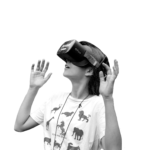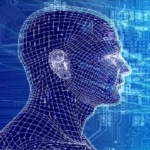
Unraveling the Mysteries of the Mind: Exploring Electroencephalography (EEG)
In the vast landscape of neuroscience, few tools have captured the imagination and curiosity of both scientists and the general public quite like the electroencephalograph (EEG). This remarkable device, with its ability to record the electrical activity of the brain, serves as a window into the intricate workings of the human mind. In this blog post, we shall delve into the world of EEG, exploring its history, applications, and its potential for unlocking the mysteries of the brain.
Unveiling the Origins
The story of EEG begins in the early 20th century, with the pioneering work of German psychiatrist Hans Berger. In 1924, Berger made history by recording the electrical activity of the human brain for the first time, a feat that laid the foundation for the development of EEG technology. His discovery revolutionized the field of neuroscience, opening up new avenues for understanding brain function.
How Does EEG Work?
At its core, EEG measures the electrical signals generated by the firing of neurons within the brain. These signals, known as brainwaves, can be detected by placing electrodes on the scalp, which pick up the electrical activity and transmit it to a computer for analysis. The resulting EEG recordings provide valuable insights into various aspects of brain function, including cognition, sleep, and neurological disorders.
Applications in Neuroscience and Medicine
EEG has found widespread use in both research and clinical settings, offering a non-invasive way to study brain activity. In neuroscience, EEG is employed to investigate topics ranging from attention and memory to language processing and emotion regulation. Researchers use EEG to observe how different stimuli and tasks impact brain activity, providing crucial insights into the underlying mechanisms of cognition.
In the medical field, EEG plays a vital role in the diagnosis and management of neurological disorders. It is commonly used to detect abnormalities associated with conditions such as epilepsy, Alzheimer’s disease, and sleep disorders. By analysing the patterns of brain activity captured by EEG, clinicians can make informed decisions regarding treatment and intervention strategies.
Advancements and Innovations
Over the years, EEG technology has evolved significantly, thanks to advancements in electronics, computing, and signal processing. Modern EEG systems offer improved sensitivity, spatial resolution, and data analysis capabilities, enabling researchers and clinicians to extract more detailed information from brainwave recordings. Additionally, wearable EEG devices have emerged, allowing for real-time monitoring of brain activity outside the laboratory setting.
Challenges and Future Directions
While EEG has revolutionized our understanding of the brain, it is not without its limitations. One of the main challenges is the limited spatial resolution of EEG, which makes it difficult to pinpoint the precise location of neural activity within the brain. However, ongoing research efforts aim to overcome this limitation through the integration of EEG with other imaging modalities, such as functional magnetic resonance imaging (fMRI) and magnetoencephalography (MEG).
Looking ahead, EEG holds tremendous promise for furthering our knowledge of the brain and improving clinical outcomes for patients with neurological disorders. With continued innovation and collaboration across disciplines, EEG technology is poised to unlock new insights into the complexities of the human mind, paving the way for ground-breaking discoveries in neuroscience and medicine.
In conclusion, electroencephalography stands as a testament to the remarkable capabilities of science and technology to unravel the mysteries of the mind. From its humble beginnings to its current state of the art, EEG continues to shape our understanding of brain function and revolutionize the way we diagnose and treat neurological conditions. As we journey deeper into the realm of neuroscience, EEG remains a beacon of hope and discovery, offering glimpses into the inner workings of the most complex organ in the human body.
ITIE Knowledge Solutions India partners with MITSAR Russia:
MITSAR Russia and ITIE Indeed, holds a reputation as a reliable solution for long-term Video EEG monitoring, particularly in settings like Epilepsy Monitoring Units (EMU) and Intensive Care Units (ICU). Its combination of video and EEG monitoring allows for comprehensive observation of patients with epilepsy, providing crucial data for diagnosis, treatment planning, and ongoing management.
The system’s ability to continuously record brain activity over an extended period, coupled with synchronized video footage, offers valuable insights into seizure patterns, their triggers, and associated behaviour or symptoms. This comprehensive monitoring is especially beneficial for patients undergoing evaluation for epilepsy surgery or those with refractory seizures requiring intensive management.
Furthermore, MITSAR-LTM’s user-friendly interface and advanced software features facilitate efficient data analysis, aiding clinicians in interpreting the EEG findings and making informed decisions regarding patient care. Its versatility and reliability make it a preferred choice among healthcare professionals for long-term EEG monitoring in epilepsy and critical care settings.
If you have any specific questions or need further clarification, feel free to write to us at info@itie.in or call us at +91.9945366945 or log on to our web details: https://itie.in

















